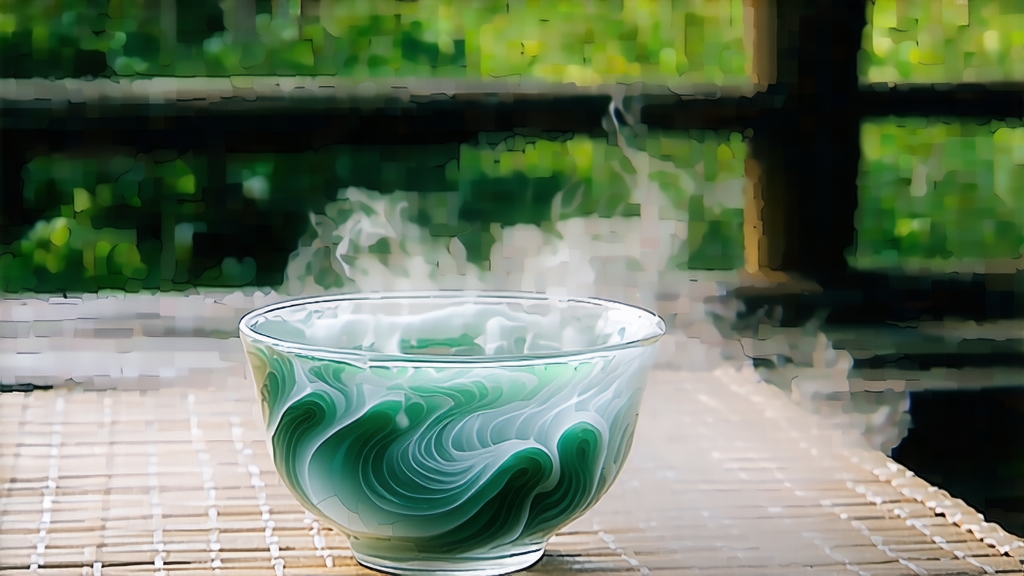
Biluochun, whose name translates literally to “Green Snail Spring,” is one of China’s ten most celebrated teas, yet it remains a delicate secret outside serious tea circles. Grown in the mist-laden microclimate of Dongting Mountain, an island in Taihu Lake two hours west of Shanghai, this green tea has been prized since the late Tang dynasty. Legends say a tea picker, startled by the powerful fragrance emanating from her basket, cried out “Such frightening aroma!”—a phrase that later evolved into the tea’s original folk name, Xia Sha Ren Xiang, “Scary Fragrance.” The Kangxi Emperor, tasting it in 1699 during his southern inspection tour, found the name inelegant and rechristened it Biluochun, referencing both the tight spiral shape of the finished leaf and the early-spring harvest season.
The tea belongs to the “tiny-leaf, early-spring” category of Chinese greens. Only the apical bud plus the immediate adjacent leaf are plucked, and only on days when the mountain air is cool and humid so that the tender shoots do not wilt en route to the village workshops. Picking begins at dawn, usually around the Qingming festival, when the buds are still sheathed in downy white hairs that later lend the liquor its silky texture. A skilled picker fills barely half a kilo of fresh leaf in a full morning, and five kilos of fresh leaf are needed for one kilo of finished tea, illustrating why top-grade Biluochun often rivals the price of silver.
Once picked, the leaf is spread in shallow bamboo trays for two to three hours of withering, reducing moisture from 76 % to roughly 68 %. This short withering is critical: too long and the delicate aromatics volatilize; too short and the downstream pan-firing will scorch the leaf edges. The next step is the “killing-green” or shaqing phase, conducted in woks heated to 180 °C. Craftsmen toss the leaves with bare hands, relying on calloused skin to judge the exact second when enzymes deactivate yet the leaf remains pliable. The temperature is then dropped to 80 °C for the spiral-shaping stage. Using a technique known as cuo tuan, the tea master presses small handfuls against the wok wall while simultaneously rolling them in a counter-clockwise motion. The combination of heat, pressure and wrist torque causes the bud to curl into the signature spiral resembling a tiny snail shell. Finally, the leaf is dried in three short bursts over a charcoal brazier covered with a thin layer of tinfoil, locking in fragrance and dropping moisture to 5 %. The entire process, from plucking to finished tea, must be completed within twelve hours; otherwise the coveted white down darkens and the aroma flattens.
Biluochun is classified into seven official grades, but connoisseurs simplify them into three experiential tiers: Supreme, Fine, and Everyday. Supreme grades are picked before Qingming from the original Dongting groves of Dongshan and Xishan islands; the leaf is almost entirely bud, silver-white on the underside and jade-green on top, and yields a liquor that is the palest champagne color. Fine grades are harvested in the two weeks after Qingming, still aromatic but with a slightly more vegetal edge. Everyday grades come from outlying counties where the terroir lacks the lake-generated fog; the leaf is larger, the spiral looser, and the cup shows a light astringency akin to steamed green beans.
Water choice is paramount when brewing. The classical text Cha Shu recommends “rainwater collected on the day of Jingzhe,” the first spring thunder. Modern practice substitutes low-TDS spring water with a neutral pH. Heat the water to 75 °C—never above 80 °C—because the downy hairs trap heat and can “cook” the bud, releasing bitter quercetins. A tall, cylindrical glass of 200 ml capacity is preferred; it allows the spirals to suspend mid-water, slowly unfurling like green fireworks. Use a 1:50 leaf-to-water ratio, approximately three grams, and steep for sixty seconds on the first infusion. The second infusion, at forty-five seconds, often reveals the most nuanced bouquet, while the third, at ninety seconds, offers a softer, sweet-mineral finish. Unlike many greens, Biluochun tolerates four infusions if the intervals are kept brief.
Professional tasting follows a three-sip protocol. The first sip is aspirated—drawn across the palate with